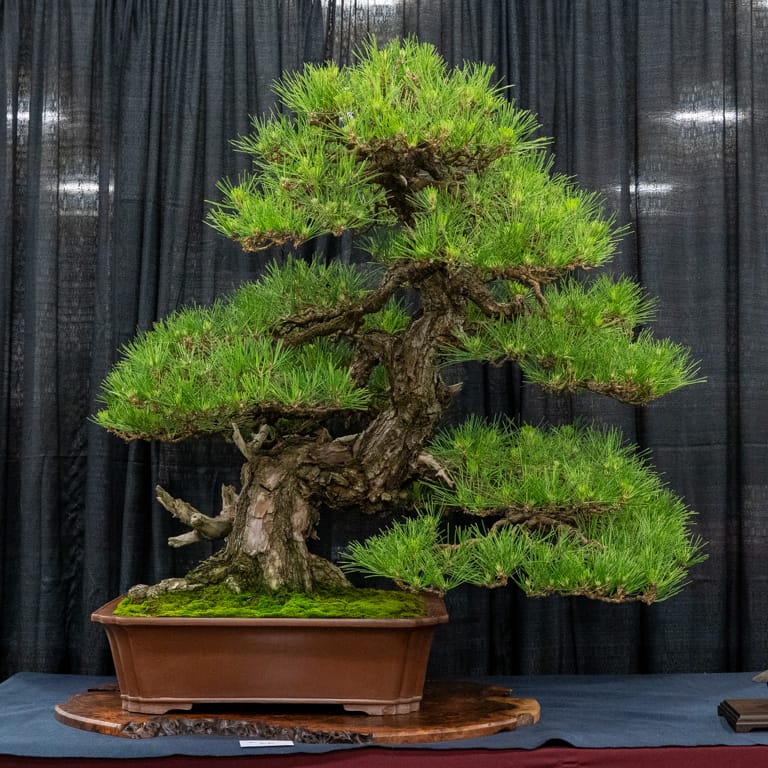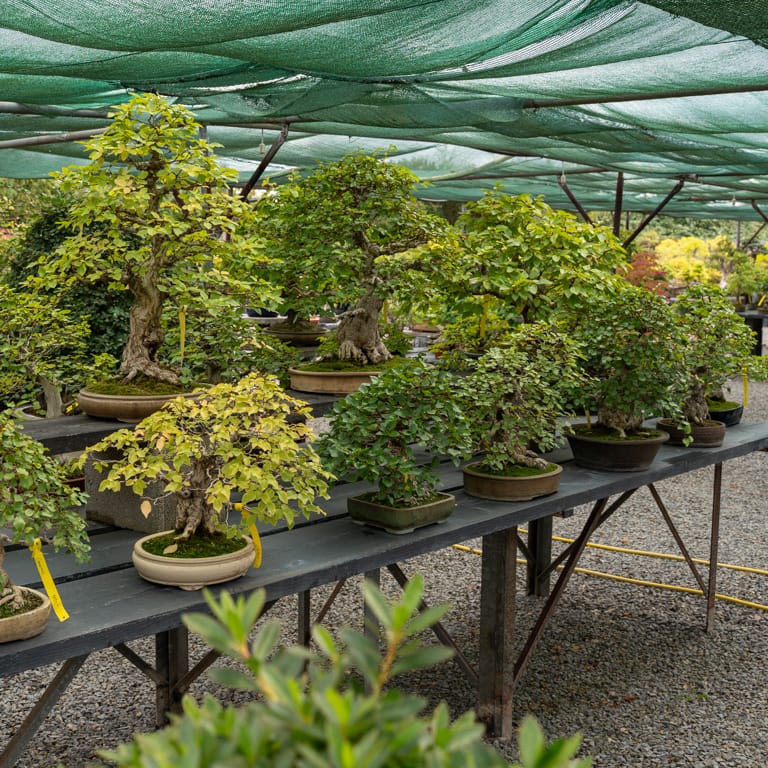
Rss Feeds (1137)
Mid-Michigan Bonsai Message Corner
"In lieu of the usual meeting schedule, The MMBC end of year luncheon at Foster Community Center will be Saturday November 15th. Members, please check your email for details.
There will be no meeting on November 20th"
- Category: Rss Feeds
- Created: 10 October 2025
- Written by:
The long-needled pines like Ponderosa and Austrian Pine tend to grow large end shoots with many needles. Selectively trimming needles off can help balance shoots, weakening strong ones and strengthening the smaller ones.
- Category: Rss Feeds
- Created: 10 October 2025
- Written by:
Last month, William N. Valavanis hosted the 9th US National Bonsai Exhibition in Rochester, New York. The event brought bonsai enthusiasts together from across the US and around the world to enjoy an awesome exhibition, a superb collection of vendors, and a weekend of bonsai programs.
- Category: Rss Feeds
- Created: 04 October 2025
- Written by:
The Bonsai Zentrum Heidelberg is a large bonsai nursery and event center owned and operated by Edis Ziegler. A previous incarnation of the business had closed in 2006 prompting Edis to acquire the property, renovate, and reopen it in 2008. Since then, the operation has grown into a premier destination for bonsai, containers, suiseki, and koi.
- Category: Rss Feeds
- Created: 03 October 2025
- Written by:
In fall, bonsai are starting the slow slide into slumber. The following photo essay shares a few ideas of how to read the results of our summer work, and what to do in the bonsai garden in fall.
- Category: Rss Feeds
- Created: 03 October 2025
- Written by:
Tonight was the ribbon cutting ceremony officially opening the two day exhibition. Tall tables were distributed throughout the exhibition area where about 50 members and visitors gathered and enjoyed a wide delicious wide assortment of Puerto Rican appetizers. They even had sweet tea.
- Category: Rss Feeds
- Created: 02 October 2025
- Written by:
This week’s bonsai tutorial takes us into the wild territory of the unexpected. An old, neglected Barberry—forgotten and not well-grown—becomes the centre of attention. At first glance, it might seem like a mission impossible. However, in bonsai, the most challenging material can sometimes hold the greatest potential for creativity and transformation.
- Category: Rss Feeds
- Created: 02 October 2025
- Written by:
The Tropical Bonsai Symposium & Exhibition is being held on October 3-4, 2025. Sponsored by the Bonsai Shohin Society in San Juan, Puerto Rico the event is being held at Jardin Selecto, owned by the Morales family. Organized by Carlos Morales (Pedro’s cousin) their garden center is rather complete with a complete inventory of soils, fertilizers, pesticides, tools and landscape plants for homeowners. Carlos has large sections with bonsai, pre-bonsai, containers, tools, wire and a wide variety of different soil mixtures.
- Category: Rss Feeds
- Created: 29 September 2025
- Written by:
One of several side trips on my recent visit to Germany took us to Heidelberg to see Minoru Bonsai, the garden of Michael Tran.
- Category: Rss Feeds
- Created: 28 September 2025
- Written by:
As summer fades and autumn arrives, the light begins to soften. The sun sits lower in the sky, casting longer shadows and bathing the bonsai garden in a golden hue. This shift in light is not just a visual delight—it plays a crucial role in the seasonal transformation of deciduous bonsai.
- Category: Rss Feeds
- Created: 26 September 2025
- Written by:
This past weekend was the East Bay Bonsai Society’s annual show in Oakland, CA, where I gave a talk about conceptual bonsai and ran a couple workshops. And I critiqued the show.









